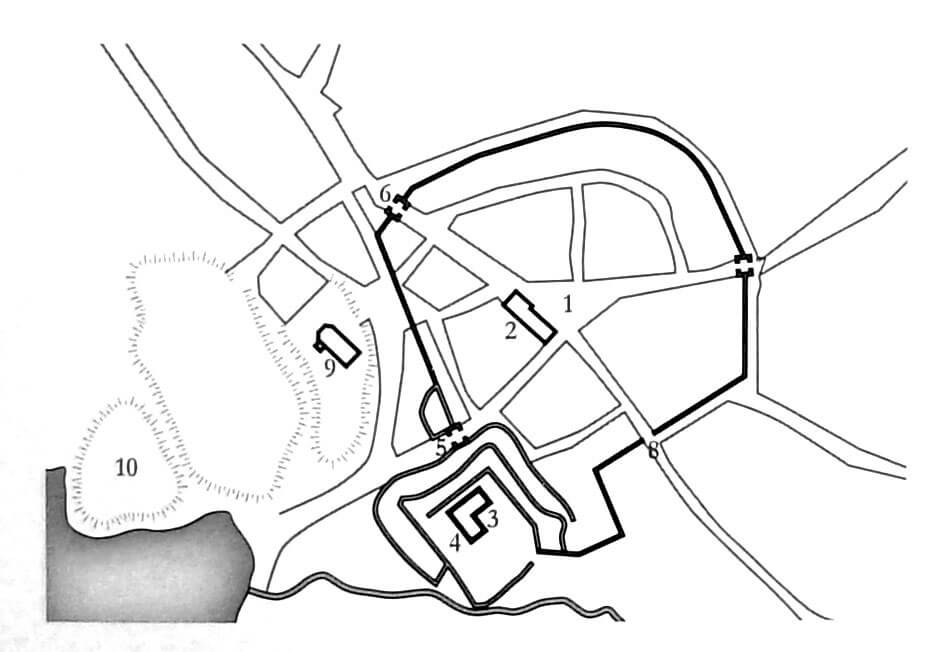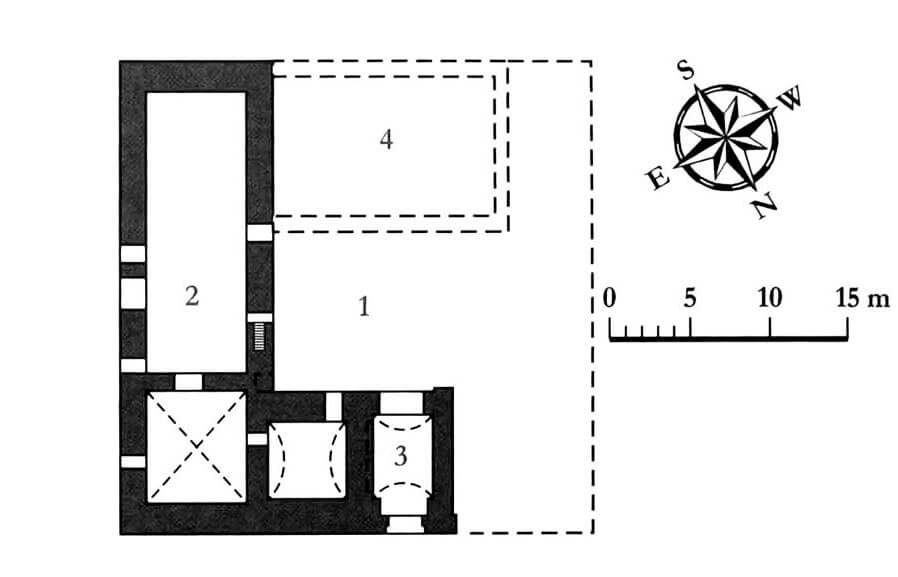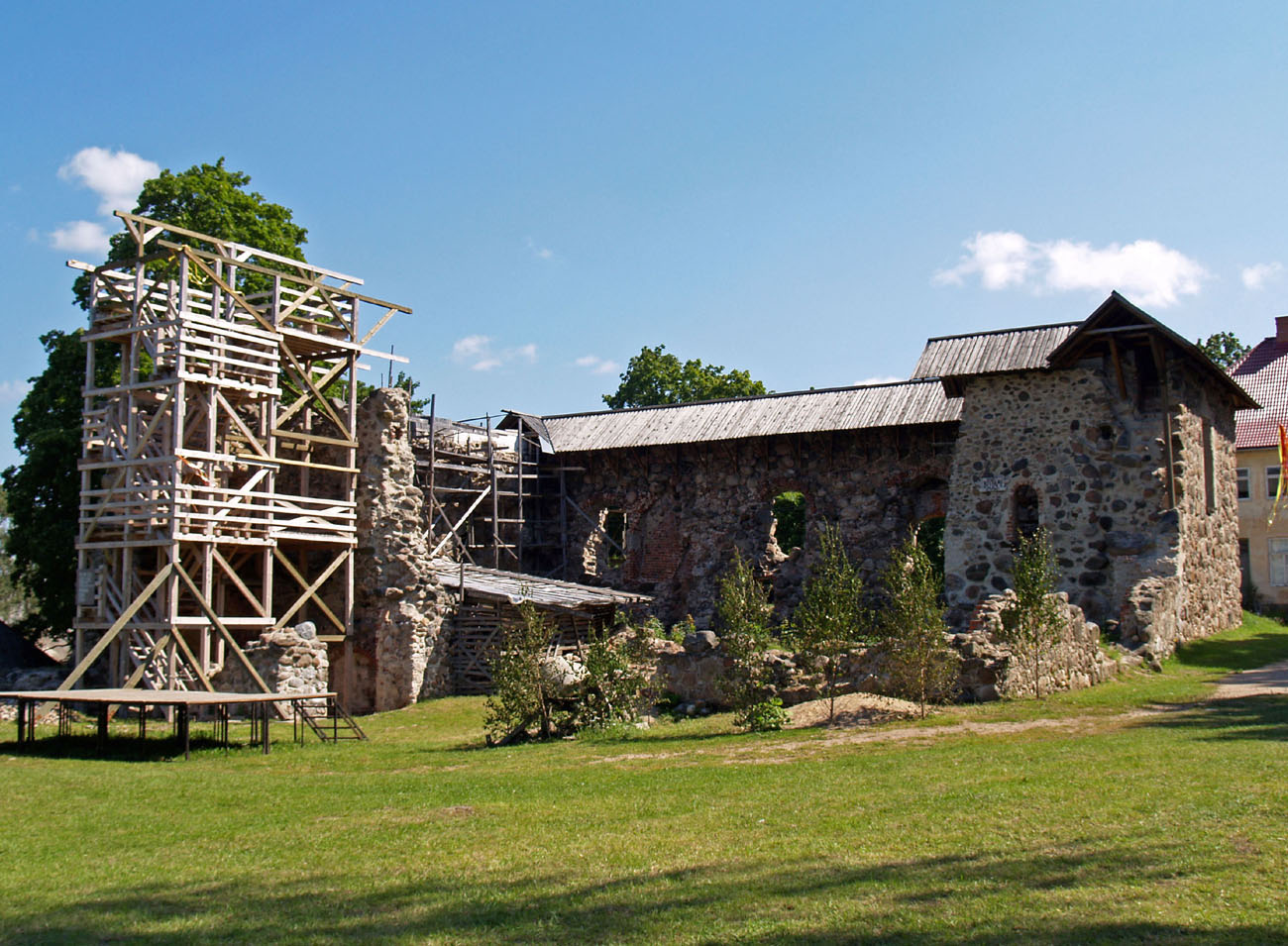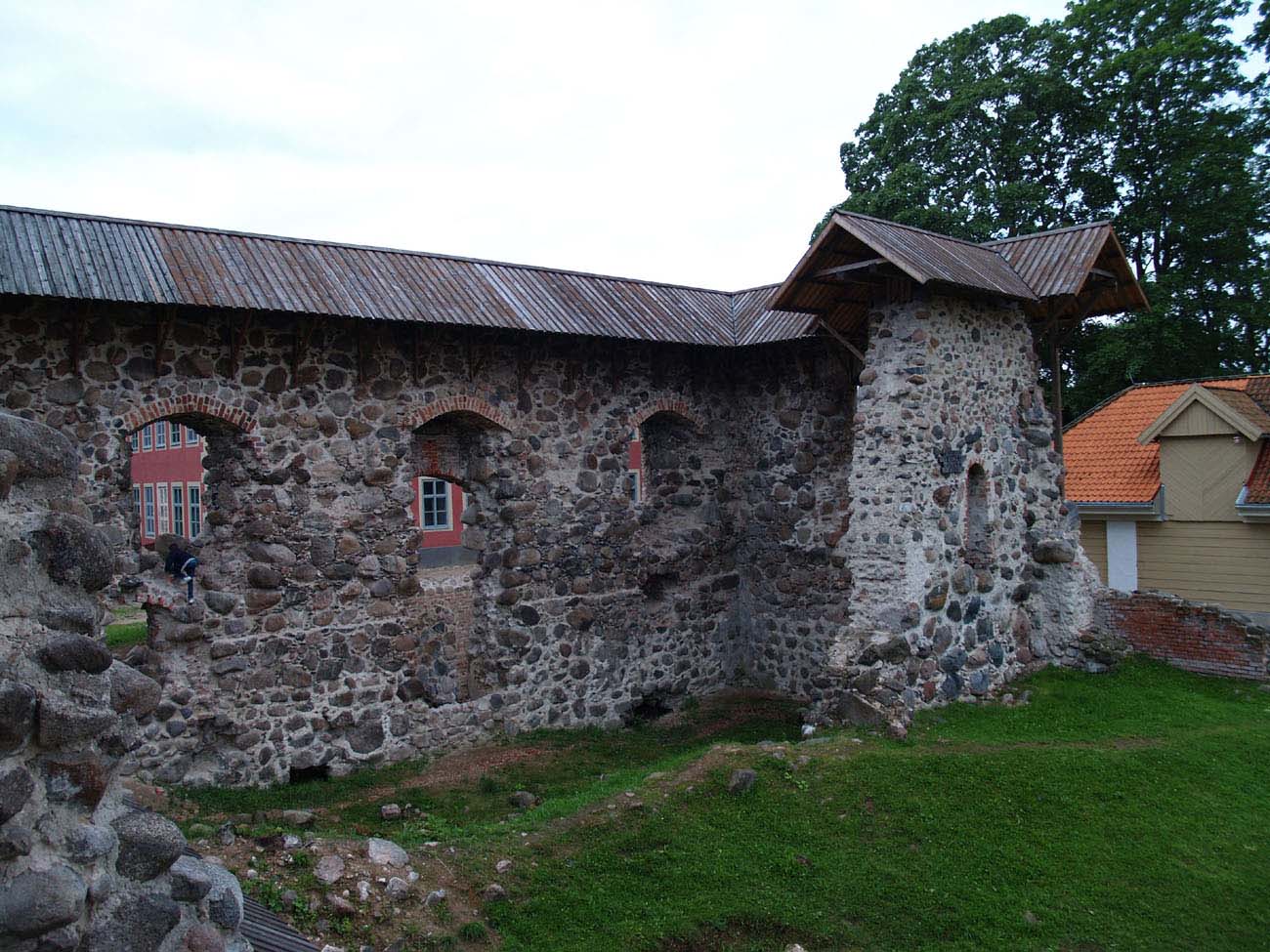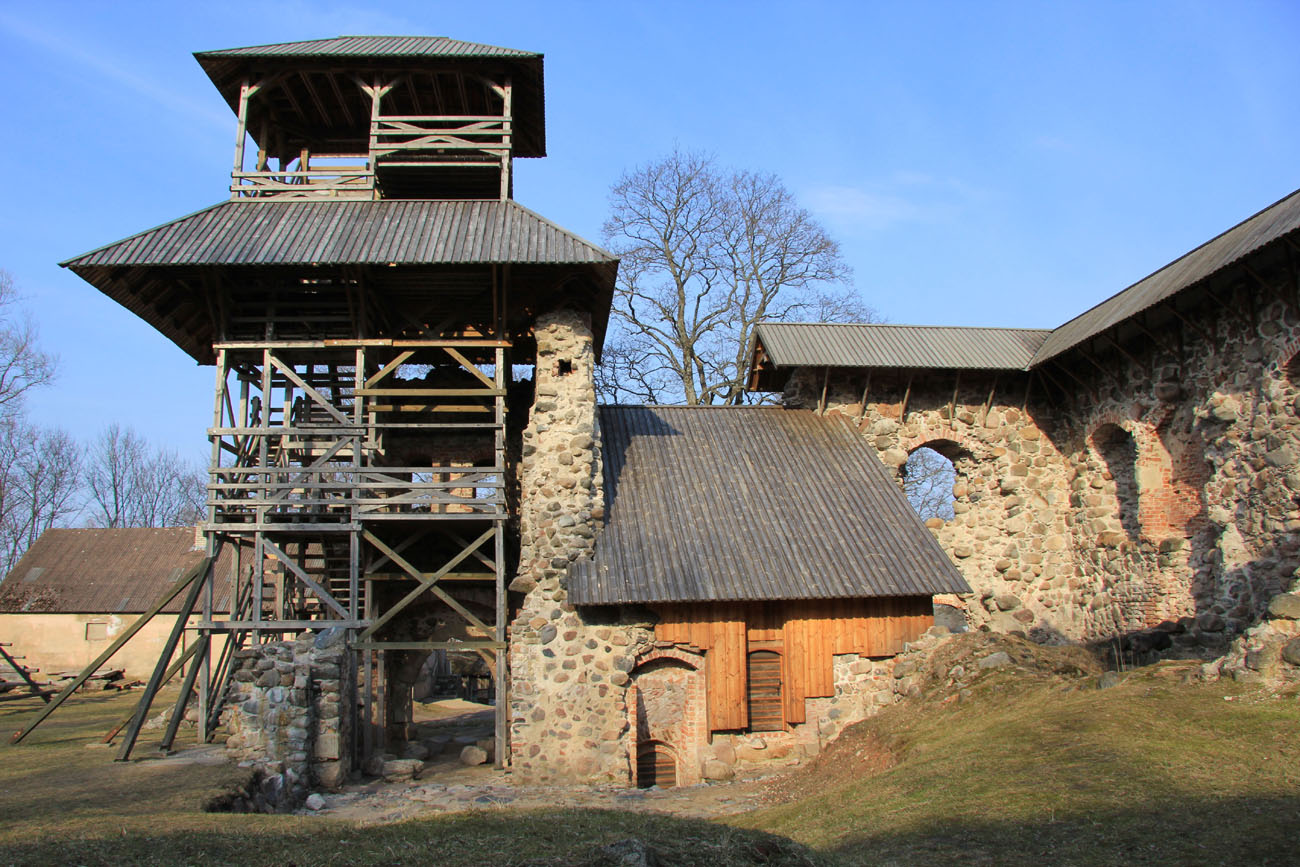History
It is not known when exactly the castle of Lemsal was erected, it is possible that it was already in the thirteenth century, because the first historical mention of the stronghold comes from 1318, when Lamsal is mentioned as one of many archbishop’s possessions, which were occupied by the Teutonic Order, and which the return was demanded by Pope John XXII.
The settlement growing next to the castle, was quite a large town, a member of the German Hanseatic League, surrounded by stone walls from the 14th century. The main source of income for the town and the castle was the Svetupe river, which until the 16th century arrivied ships from the 20 km away Baltic Sea.
The slow decline of Lamsal began in the first half of the 16th century. As a result of silting the river, the port became inaccessible to most ships, which significantly reduced income from trade. In addition, the city and the castle were burnt three times, once by the Swedish army and twice by the armies of Ivan the Terrible. After the end of the Livonian War, the power over the ruined Lamsal was taken over by the Polish-Lithuanian state, which established the seat of the starosty in it. The peace did not last long, because in 1602 the Swedes practically completely demolished all the brick buildings and fortifications.
Architecture
The castle was situated in the northern part of the settlement, south of a small stream connected with a lake in the east. The main ward had a single, rectangular courtyard with two or perhaps three wings of buildings. In a slightly shorter north building there was a gatehouse with a barrel vaulted passage in the ground floor, and the remaining sides of the courtyard were probably closed by a stone defensive wall. It is not certain whether in the Middle Ages the castle had a fortified outer baileys, they are not seen on the plans from the early eighteenth century. Instead, it had to have some form of external fortifications that would integrate its defense system with the fortified town on the eastern side. In addition, the castle most probably had a separate northern gate, which enabled access to the bishop’s stronghold without the need to enter the city.
Current state
To this day, two ruined, vaulted wings of the upper castle with a fragment of the gatehouse have been preserved. Even before the Second World War, they were in a much better condition, unfortunately they suffered damages during the raid in 1944. Although the ruins are quite small, they still have a pair of ogival, gothic windows. Currently, they are a place of local cultural events.
bibliography:
Borowski T., Miasta, zamki i klasztory. Inflanty, Warszawa 2010.
Tuulse A., Die Burgen in Estland und Lettland, Dorpat 1942.

